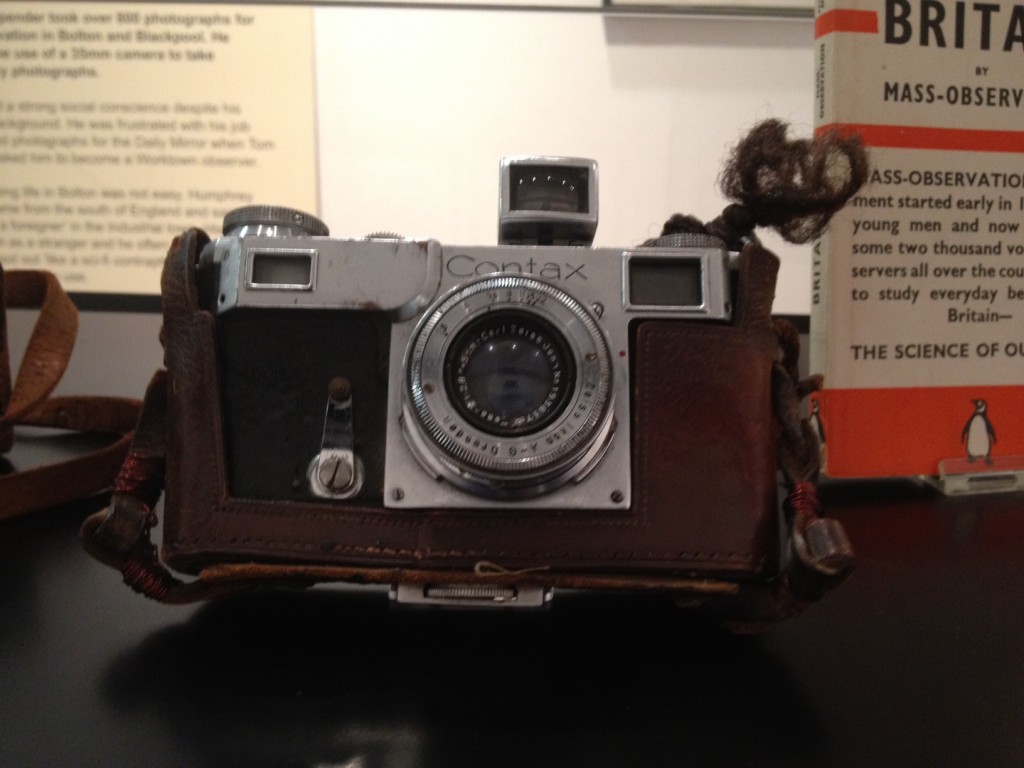The Worktown 75th Birthday exhibition opens on Saturday 22 September at Bolton Museum, and is on until the start of December. We are particularly pleased to have the opportunity to show Humphrey Spender’s camera, which he used in Bolton. It has been kindly loaned by his widow Rachel Spender for the exhibition.
The story goes that Spender used a Leica which was then stolen, and replaced it with this camera, a Contax II. I thought that we would be able to see if this was true by date ordering the films that Spender took in Bolton. Film cameras often have quirks in terms of where the film starts, or how many shots you can get. My amateur detective skills have proved insufficient to discover anything though- or perhaps he only used this camera.
I’m not that personally enthusiastic about fetishising objects, but this camera does symbolise a turning point in photography. 35 mm cameras were a new invention which replaced the popular use of large format cameras. They enabled photographers to capture unposed images and so their invention led to a new style of photography, exemplified by Henri Cartier-Bresson’s decisive moments.
Spender’s photographs of Bolton were one of the first documentary photography projects to harness the possibilities of this new technology. Spender described how his camera seemed “almost a sci-fi contraption” to the people of Bolton. He was one of few people who could afford and use this type of camera in the 1930s. He showed remarkable skill in using the camera, particularly as it did not have a light meter. Out of the 850ish photos he took in Bolton, there are only about three dropped frames.
Although Leica is still a photographic holy grail, the Contax II was actually a superior camera in 1937. It had a fast shutter speed of 1/1250 second and superb quality Zeiss lenses. We have also borrowed Spender Biogon wide angle lens which enabled him to be an unobserved observer in Bolton. Because the lens had such a wide angle of view he could position it on a pub table and then photograph people without them realising

Hi
Although the nominal size of the 35mm still format is 36 x 24mm, in reality few cameras have a film gate which is exactly those dimensions. Most will be slightly longer or shorter, or even a fraction wider or narrower. Usually you are talking about less than a millimetre, perhaps fractions of a millimetre but it will be consistent every frame. One way to distinguish cameras is by precise dimensions of each negative (most easily calculated simply by previewing a frame in scanner software which typically measures its size).
The precise shape of gate corners can sometimes vary from camera to camera, worth looking at.
I own both vintage Leica and Contax II rangefinders which I have repaired and use myself. The results from the Zeiss lenses of the Contaxes, in particular, with sharp, fine grained modern films are unbelievable. If further detail is needed apropos distinguishing which negs/which cameras, I’m happy to offer what advice I may.